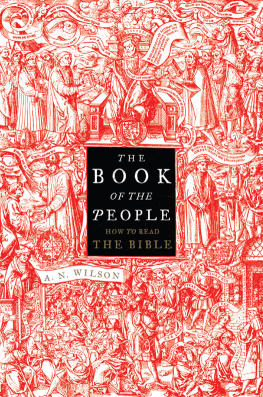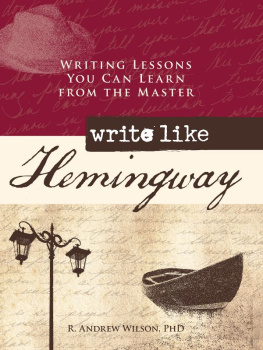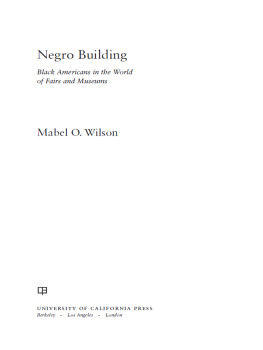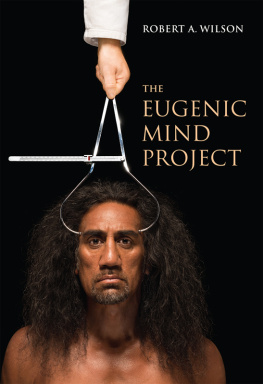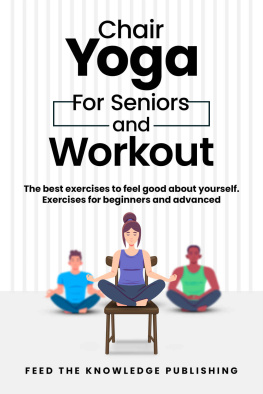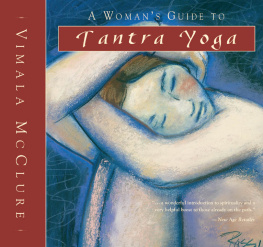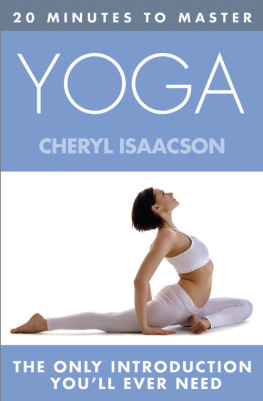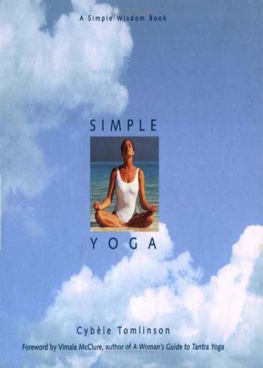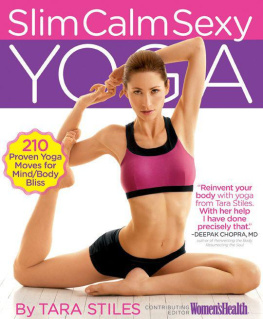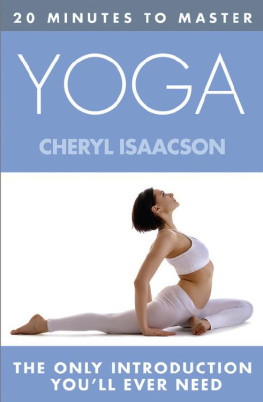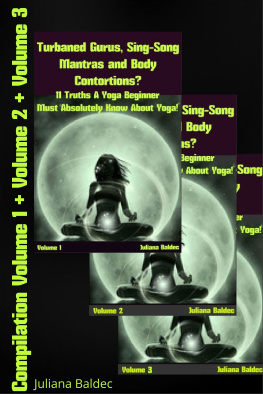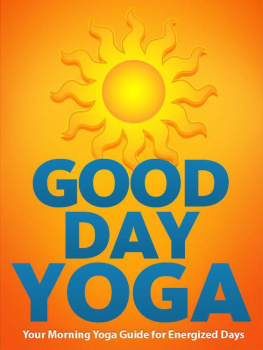5 Minutes of Peace:
Yoga for Todays Woman
By Monetta Wilson
Monetta Wilson 2021
All rights reserved. No portion of this book may be reproduced in any form without permission from the publisher, except as permitted by copyright law. For permissions contact:
monetta@monettawilson.com
Cover by Alphonso Elm
Photos by Daniel Marcion
Disclaimer
I hope you will find this book helpful in your wellness journey. The information and exercises provided within this book are to be used at your own discretion and under professional guidance. They are not offered as a replacement or substitute for professional medical advice or treatment. Not all exercises are suitable for everyone, and making use of this or any other exercise program may result in injury. If you believe that you may suffer from a physical or emotional impairment, we strongly recommend that you seek advice from a licensed healthcare professional before embarking on this or any other exercise program. To reduce the risk of injury, never force or strain. Listen to your body. Supplement your practice with a healthy diet and lifestyle. Pregnant women should not practice any twists or abdominal tightening poses, and should consult with their doctor before beginning any exercise or yoga program. After delivery exercise should begin only on the advice of your doctor.
Monetta Wilson, Sayana Yoga and Yoga with Mo disclaim any liability or loss in connection with any information or exercises contained in this book, or from the adoption of any instruction or advice expressed therein.
To the women who do it all
Introduction
I have too much to do; I dont have time for yoga. I cant do yoga. I cant sit still.
There are many reasons why we dont make time for ourselves. Our western culture teaches us that we should always be working towards some goal. This pressure to achieve is often greater on women. Whether we are homemakers, working mothers, stay at home moms, students or professionals; we push ourselves to excel. We do so much that we neglect our own well being. We feel guilty when we make time for self care. We feel selfish and lazy. We forget that well being is the source of true happiness.
We look for happiness in so many places all while overlooking that true happiness begins with self acceptance and self love. When you accept yourself, as an imperfect person working to be the best version of yourself, it becomes easier to make time for you. You dont need to start with several hours; five minutes here and there will do. Before long, five minutes turn into ten, ten minutes turn into fifteen and youve developed a habit of self care.
I wrote this book for todays woman. The woman who makes things happen. The woman who adapts to the situation. The woman who is running a business and trying to have a life. The one running a household and trying to have a life. The one going to school, while working and raising her children. The woman who is ready to live on her terms. The woman who knows what kind of life she wants and makes it happen.
I wrote this book for todays woman because I am todays woman. I am running a business while dealing with chronic illness. Sometimes I dont have the time or energy for an hour of yoga but I always have energy for five poses. You can commit to five poses and you can feel the difference at five poses. I developed some of these sequences for myself but I found myself sharing it with my clients because people kept asking for just a few poses that they can do at home on the days that they cant make it to class.
I decided to write a book of short practices that can be done throughout the day or put together to form longer practices to support todays woman. I hope that as you practice along you feel the love that I poured into this book. I also hope that this book inspires you to find joy in yoga. I hope you find 5 minutes of peace and it leads you to live the life you desire. I wish you love, peace and success.
What is Yoga
Many people believe that yoga is something that super flexible people do; twisting and contorting their body into impossible shapes and positions. Others think yoga is for stressed out people who need to relax. While it is true that many people who practice yoga do so to relieve stress and to stay in shape, there are many other benefits that can be gained from practicing yoga. Among other things, yoga can help build strength and confidence, improve flexibility and balance as well as foster peace and contentment.
Yoga is thought to have begun in the Indus region of todays Pakistan and India. As early as 5000 -2500 BCE, there lived a Sanskrit speaking people who were part of a very advanced civilization. These people wrote what is referred to as the Vedas: a how-to guide describing how to connect with the Divine. It contained hymns, chants and rituals. It is where the word yoga is first mentioned. Later, scholars referred to as the Upanishads contemplated more philosophical questions such as the meaning and purpose of life. It is during the time of the Upanishads that the foremost writings on yoga, Patanjalis Yoga Sutras, were written. The Yoga Sutras outline the 8 limbed path toward enlightenment. From then until more recently yoga developed mostly as a philosophy with the physical postures forming only a small compartment of the overall practice.

In 1350, the first comprehensive text describing yoga poses, the Hatha Yoga Pradipika, was written. Hatha Yoga became popular in India around 100 years ago. At that time Sri Krishnamacharya began teaching yoga at the Royal Palace. He developed a series of postures to meet the needs of his active young male students. Most of the styles of Hatha yoga popular today trace back to Krishnamacharya and his students. His students included Indra Devi, B. K. S. Iyengar and his son T. K. V. Desikachar. Iyengar Yoga is named after B.K.S Iyengar. It focuses on alignment and uses props to facilitate healing. Iyengar is credited with bringing yoga to America and the West through his book Light on Yoga and other publications.
Many teachers use the alignment principles of Iyengar Yoga in addition to their own approach to create a unique style of yoga. Anusura Yoga, created by John Friend, emphasizes alignment principles as well as the beauty and sacredness of the body. Kundalini Yoga focuses on meditation and poses that stimulate the bodys organs and systems to heighten creativity and promote relaxation and healing. Ashtanga Vinyasa Yoga follows a set series of postures to restore alignment, purify and detoxify the body. Krishnamacharyas son Desikachar teaches an individual style of yoga that focuses on breath and personal exploration. Vinyasa Flow or Flow Yoga classes connect a series of poses so that one pose leads to another in breath-synchronized movement. There is no set series of poses therefore no two classes are alike. There are so many styles of yoga out there that you are sure to find one that meets your needs.
When you practice yoga you connect the mind and body to help you relax and feel rejuvenated. A typical vinyasa yoga class begins with Surya Namaskar, otherwise known as Sun Salutations. The movement then proceeds through a series of strengthening, lengthening, hip opening, backbending and forward folding poses before ending in Savasana or Corpse Pose, also known as final resting pose. The difficulty or complexity of the poses depends on the level of strength and flexibility of each individual student.


